Fluke T150/VDE Handleiding
Fluke
Meetapparatuur
T150/VDE
Bekijk gratis de handleiding van Fluke T150/VDE (4 pagina’s), behorend tot de categorie Meetapparatuur. Deze gids werd als nuttig beoordeeld door 12 mensen en kreeg gemiddeld 4.8 sterren uit 6.5 reviews. Heb je een vraag over Fluke T150/VDE of wil je andere gebruikers van dit product iets vragen? Stel een vraag
Pagina 1/4

T90/T110VDE/
T130VDE/T150VDE
Voltage/Continuity Tester
Instruction Sheet
Introduction
The Fluke T90/T110VDE/T130VDE/T150VDE
Electrical Testers (the Tester or Product) are
voltage and continuity testers with a rotary eld
indication (T110VDE/T130VDE/T150VDE only).
Their primary use is for test and measurement in
industrial, commercial, and household environments.
This Product complies with the most recent safety
standards for safe, reliable test and measurement.
The xed test probe cover prevents the risk of injury
when you move the instrument.
To Contact Fluke
Fluke Corporation operates worldwide. For local
contact information, go to our website: www.uke.com
To register your product, view, print, or download
the latest manual or manual supplement, go to our
website.
Fluke Corporation
P.O. Box 9090
Everett, WA 98206-9090
+1-425-446-5500
uke-info@uke.com
Safety Information
Warning
To prevent possible electrical shock, re, or
personal injury:
●Read all safety Information before you use the
Product.
● Use the Product only as specied, or the
protection supplied by the Product can be
compromised.
● Measure a known voltage rst to make sure
that the Product operates correctly.
●Do not apply more than the rated voltage,
between the terminals or between each
terminal and earth ground.
PN 3928126
October 2011, Rev. 3, 3/21
© 2011-2021 Fluke Corporation. All rights reserved.
Specications are subject to change without notice. All product
names are trademarks of their respective companies.
● Limit operation to the specied measurement
category or voltage ratings.
●Do not work alone.
●Comply with local and national safety codes.
Use personal protective equipment (approved
rubber gloves, face protection, and ame-
resistant clothes) to prevent shock and arc
blast injury where hazardous live conductors
are exposed.
●Do not use the Product around explosive gas,
vapor, or in damp or wet environments.
●Do not use and disable the Product if it is
damaged.
●Do not use the Product if it operates
incorrectly.
● Keep ngers behind the nger guards on the
probes.
●Do not use the Product if the test leads are
damaged.
●Examine the case before you use the Product.
Look for cracks or missing plastic.
●The battery door must be closed and fastened
before you operate the Product.
●Replace the batteries when the low battery
indicator shows to prevent incorrect
measurements.
●Repair the Product before use if the battery
leaks.
●For use by competent persons. Anyone
using this Product should be knowledgeable
and trained about the risks involved with
measuring voltage, especially in an industrial
setting, and the importance of taking safety
precautions and of testing the Product before
and after using it to ensure that it is in good
working condition.
Symbols
These symbols are on the Tester or in this instruction
sheet.
Symbol Explanation
Important information. Consult the
instruction sheet.
Hazardous Voltage.
¥Suitable for live working.
This product complies with the WEEE
Directive (2002/96/EC) marking
requirements. The axed label indicates
that you must not discard this electrical/
electronic product in domestic household
waste. Product Category: With reference
to the equipment types in the WEEE
Directive Annex I, this product is classed
as category 9 "Monitoring and Control
Instrumentation" product. Do not dispose
of this product as unsorted municipal
waste. Go to Fluke’s website for recycling
information.
Symbol Explanation
Conforms to European Union Directives.
§VDE Association for Electrical, Electronic
& Information Technologies; following
rules of "Geprüfte Sicherheit."
CAT III Measurement Category III is applicable to
test and measuring circuits connected to
the distribution part of the building’s low-
voltage MAINS installation.
CAT IV Measurement Category IV is applicable
to test and measuring circuits connected
at the source of the building’s low-voltage
MAINS installation.
Accessories
The Tester is supplied with accessories.
Part Number Accessory
4083642 GS38 Probe Tip Sheath
4083656 4.2 mm ∅ Probe Extensions
4111533 H15 Belt Holster (sold separately)
4111540 C150 Zippered Soft Carrying Case
(sold separately)
Figure 1 shows the Probe Tip Protector Cap. This
multifunctional accessory is useful for tests and
storage of dierent accessories. (The Probe
Extensions are stored in the Probe Tip Protector Cap
before shipment.)
Storage area for Probe Tip Sheaths
Storage area for 4.2 mm ∅ Probe Extensions
Earth-pin safety-socket opener for UK
sockets (press opener into socket to release
safety covers, see Figure 2)
Storage area for probes when not in use
1
4
3
1
2
Quick Reference
Use the pushbuttons to turn the functions on or o.
See the list that follows for a quick reference to each
of these pushbuttons.
Pushbutton Description
c
Push to turn torch light on or o
(T110VDE, T130VDE, T150VDE).
To save battery power the
function automatically turns o
after 30 seconds.
I
Push to hold the value that shows
in the LCD in volt and resistance
measurements. Push again
to turn HOLD o (T130VDE,
T150VDE).
To save battery power the
function automatically turns o
after 30 seconds.
h
Push this button on each of
the probes at the same time to
start the test for low impedance
switchable load.
Il
Push and hold for 2 seconds to
turn the resistance measurement
on or o (T150VDE only).
To save battery power, the
function automatically turns o
after 30 seconds.
Figure 3 illustrates how to store and retrieve the tip
accessories from the cap.
For storage, push Probe Tip Sheath into
place.
To retrieve, rmly push probe tip into Probe
Tip Sheath.
Pull on probe handle to remove Probe Tip
Sheath.
For storage, push 4.2 mm Probe ∅
Extensions into place.
To retrieve, rmly push probe tip into Probe
Extensions. Twist 1/4 turn.
Pull on probe handle to remove Probe
Extensions. Continue to twist until tip is tight.
3
1
4
2
5
1/4
3
6
2

Features
Model
T90 T110VDE T130VDE T150VDE
Complies with EN 61243-3:2014 • • • •
LED Indication Range: 12 V to 690 V dc and ac • • • •
V Display: Multiple LED Bargraph • • • •
Independent ELV indicator LED, indicates if >50 V ac/120 V dc is
present even in the event of no battery power or main circuit failure • • • •
LCD Indication Range: 6 V to 690 V dc and ac • •
V Display: Digital LCD 3½ digit (1 V resolution) • •
Resistance Measurement: LCD 3½ digit (0 to 1999 Ω/1Ω resolution) •
LCD Backlight • •
Display HOLD: Freeze/unfreeze display with voltage or resistance
measurement • •
CAT II 690 V / CAT III 600 V •
CAT III 690 V / CAT IV 600 V • • •
Rugged, Double-Insulated Wire • • • •
Fixed Impedance ~200 kΩ ( 3.5 mA @ 690 V)≤• • • •
Switchable Load by 2 pushbuttons (~30 mA @ 230 V) • • •
Vibration During Load (when 2 switchable load pushbuttons are
pushed)
• • •
Single-Pole Phase Test (also operates with gloves) • • • •
Rotary Field Direction (also operates with gloves) • • •
Continuity Test / Diode Test • • • •
Torch • • •
Beeper for Continuity/Phase/ACV • • • •
IP54 •
IP64 • • •
Slim Metal Probe Tips (threaded base for included tip accessories) • • • •
Probe Tip Protector Cap (secure storage for the docked probes) • • • •
4.2 mm ∅ Probe Tip Thickness Extensions (for better t in outlets) • • • •
19 mm Probe Tip distance when docked • • • •
Probe Tip Sheath (UK GS38 sheath–keeps the exposed metal to a
<4 mm limit) • • • •
Slim Probe for Ultra-Compact Form Factor •
Display
LEDs
(All Models) Description
y
x
w
v
u
t
s
Voltage level is backlit
zVoltage level is more than ELV
limit (>50 V ac or >120 V dc)
aVoltage is ac / phase in Single
Pole Phase test
d
DC
e
Voltage is positive or negative at
the indicator probe
bBattery is low / Replace battery
fContinuity or diode in forward
operation
gSwitchable load is ON (two buttons
pressed and current ows)
q r 3-phase sequence indication
detected left or right turning
phases with nonindicator probe
(L1) to indicator probe (L2)
1
3
2
4
5
6
gpn76.eps
LCD
(T130VDE/
T150VDE)
Description
Display is in HOLD mode
Voltage measurement (T130VDE/
T150VDE) or resistance
measurement (T150VDE)
Resistance measurement
(T150VDE)
AC Voltage measurement
DC Voltage measurement
Battery is low / Replace battery
How to Hold the Tester
Always hold the product behind the barrier to keep the
display in view. See Figure 4.
Warning
To prevent possible electric shock, never
touch the metal pins of the probes when
power is applied.
Self‑Test
The Tester has a built-in self test function.
Before and after use, do a self-test:
1. Touch and hold the probe tips together.
f shows and you can hear the beeper. This
makes sure that the test leads have continuity.
2. Make sure that:
• batteries are good
• b (T90, T110VDE) is NOT on
• (T130VDE VDE) does not show in B , T150
the display
3. Continue to hold the probe tips together for more
than three seconds.
4. Open the probe tips again. All LEDs (all but z
and ) must be on and all symbols in the LCD g
(T130VDE, T150VDE) show for one second. This
test makes sure that all other internal circuits and
indicators are good.
5. Measure a known voltage such as a 230 V socket
outlet. This completes the self-test and includes
the >ELV circuit.
If the Tester fails the self-test or voltage test, do not
use. See To Contact Fluke for servicing.
For an inspection of the insulation, cables, and case,
see .Safety Information
4 5

Voltage Test
A voltage test is the main function of the Tester. The
T90 and T110VDE have an LED bargraph indication
to show the nominal voltage levels. The T130VDE and
T150VDE also show the values in the LCD.
Connect the two test probes to the UUT to do a
voltage test.
Above 12 V the Tester turns on automatically. For the
T130VDE and T150VDE, the LCD comes on at 6 V.
The backlit LEDs show the nominal voltage level, for
example v w or .
For the T130VDE and T150VDE, the voltage is
measured and the value is shown on the LCD as for
example, 227 j.
Interference voltages (capacitive or inductive) could
inuence the Product display. To prevent these
inuences, press both load buttons. This action loads
the UUT with a lower impedance and suppresses the
interference voltages. See Voltage Test with Switched
Load .for more information
The voltage value on the LCD must not be used to
validate a zero voltage. Always use the LED bargraph.
For ac voltages, the LED and the symbol in a j
the LCD (T130VDE/T150VDE) illuminates. For dc
voltages, the polarity of the display voltage refers to
the instrument test probe with the and LEDs or D E
the + or - symbol in the LCD (T130VDE/T150VDE). For
voltages that are more than the ELV limit (>50 V ac or
>120 V dc), comes on in the display. The voltage z
LED bargraph and the >ELV indicator must not be
used for measurements. For measurements you can
use the LCD on the T130VDE/T150VDE to see the
actual value.
When the LED bargraph does not indicate the
presence of voltage (no LEDs illuminated), Fluke
highly recommends that you install earthing
equipment before work.
Voltage Test with Switched Load, RCD
Trip Test (T110VDE/T130VDE/T150VDE)
During voltage tests, you can temporarily decrease
the interference voltages from inductive or capacitive
coupling by loading the UUT with a lower impedance
than the Tester has in normal mode. The interference
voltage returns to the original level once the
Switched Load is removed. In systems with RCD
circuit breakers, you can trip an RCD switch with the
same low impedance as when you measure voltage
between L and PE (see Figure 5).
To do an RCD trip test during voltage measurement,
push the two buttons at the same time. If you have h
10 mA or 30 mA RCDs between L and PE in a 230 V
system, it will trip.
During load current, the indicator probe side vibrates
and the g LED is the indication for the owing load
current. This indication is not to be used for voltage
test or measurement.
Due to low impedance, this circuit is overload-
protected and will decrease the load current after
20 seconds @ 230 V and after 2 seconds @ 690 V.
If the two pushbuttons are not used, the RCDs will not
trip, even in measurements between L and PE.
Single‑Pole Phase Test
Warning
To prevent possible electric shock, never
touch the metal pins of the probes when
power is applied.
To do a single-pole phase test:
1. Firmly hold the indicator probe around its body
(between the nger guard and cable).
2. Touch the probe tip to an unknown contact to nd
the conductor.
a turns on when the ac voltage is >100 V and
you hear the beeper.
For a single-pole phase test to nd external
conductors, the display function operates unreliably
in some conditions. An example is insulated body
protective equipment on insulated locations, such as a
PVC oor or berglass ladder.
The Tester operates without a touch electrode and is
usable when you wear gloves. The single-pole phase
test is not meant to nd if a conductor is live or not.
For this function, always use the Voltage test.
Continuity/Diode Test
To do a continuity test of cables, switches, relays,
bulbs, or fuses:
1. Do a Voltage test to make sure the UUT is not live.
2. Connect the two test probes with the UUT. You will
hear the beeper for continuity and is on.f
The test voltage/current polarity for a diode test at the
non-indicator test probe is positive and the indicator +
test probe is negative .-
Note
The Tester automatically goes into the voltage
measurement mode if voltage is sensed.
Beeper (T110VDE/T130VDE/T150VDE)
The beeper is heard when the Tester is in the
Continuity, Voltage, and Single-Pole Phase Test
modes. In work areas with high background noise,
make sure you can hear the beeper before you start
a test.
Resistance Test (T150VDE)
The Tester measures low ohm resistances between
1 and 1999 at a resolution of 1 . Ω Ω Ω
To do a resistance test:
1. Do a Voltage test to make sure the UUT is not live.
2. Connect the two test probes with the UUT. Push
and hold for 2 seconds and read value Il
on the display.
3. Push and hold for 2 seconds to turn the Il
function o.
To save battery power the function automatically
turns o after 30 seconds. The Tester automatically
goes into the voltage measurement mode if voltage
is sensed.
Display HOLD
(T130VDE/T150VDE)
The T130VDE and T150VDE include a Display HOLD
function for the LCD.
To use the Display HOLD function:
1. Push HOLD to freeze the LCD while in a Voltage
or Resistance measurement. The status is shown
in the display with a HOLD symbol.
2. Push HOLD again to unfreeze the LCD.
To save battery power the Display HOLD function
automatically turns o after 30 seconds.
Rotary Field Indication
(T110VDE/T130VDE/T150VDE)
The Tester has a double-pole rotary eld indicator.
The 3rd pole is capacitively-coupled into the unit from
the user’s hand. The Tester operates without a touch
electrode and is also usable when you wear gloves.
q r and display for ac voltage measurements,
but the rotary direction is found only in a three-phase
system. In parallel, the Tester reads the voltage
between two external conductors.
To use the rotary eld indicator:
1. Connect the test probe with the phase L1 and the
indicator probe with the phase L2.
2. Firmly hold the indicator probe around its body
(between the nger guard and cable).
The voltage and the rotary eld direction show on the
display. (see Figure 6)r signies that the supposed
phase L1 is the actual phase L1 and the supposed
phase L2 is the actual phase L2 right rotary eld.
q (see Figure 7) signies that the supposed phase
L1 is the actual phase L2 and the supposed phase L2
is the actual phase L1 left rotary eld. A retest with
exchanged test probes will cause the opposite symbol
to illuminate.
6 7
Torch and Backlight
(T110VDE/T130VDE/T150VDE)
The T110VDE/T130VDE/T150VDE include a torch
and backlight function. This function is helpful in areas
with unsatisfactory light, for example, division switch
cabinets.
To use the torch or backlight:
1. Push to turn the torch and backlight on.c
2. Push c again to turn the torch and backlight o.
To save battery power the function automatically turns
o after 30 seconds.
Maintenance
Warning
For safe operation and maintenance of the
product:
●Be sure that the battery polarity is correct to
prevent battery leakage.
●Remove batteries to prevent battery leakage
and damage to the Product if it is not used for
an extended period or if it is stored above or
below its operating temperature.
●Repair the Product before use if the battery
leaks.
Warning
To prevent personal injury:
●Batteries contain hazardous chemicals that
can cause burns or explode. If exposure to
chemicals occurs, clean with water and get
medical aid.
●Do not disassemble the Product beyond the
removal of the battery door.
●Have an approved technician repair the
Product.
●Remove the input signals before you clean the
Product.
● Use only specied replacement parts.
●Keep the Tester dry and clean.
●Do not operate the Product with covers
removed or the case open. Hazardous voltage
exposure is possible.
Product specificaties
| Merk: | Fluke |
| Categorie: | Meetapparatuur |
| Model: | T150/VDE |
| Kleur van het product: | Black, Yellow |
| Breedte: | 260 mm |
| Diepte: | 70 mm |
| Hoogte: | 38 mm |
| Stroombron: | Batterij/Accu |
| Beeldscherm: | LCD |
| Ondersteuning voor plaatsing: | Draagbare multimeter |
| Ondersteund aantal accu's/batterijen: | 2 |
| Type product: | Digitale multimeter |
| Type batterij: | AAA |
| Meetcategorie: | CAT II 500V, CAT III 600V |
Heb je hulp nodig?
Als je hulp nodig hebt met Fluke T150/VDE stel dan hieronder een vraag en andere gebruikers zullen je antwoorden
Handleiding Meetapparatuur Fluke

10 Juni 2024

26 Juli 2023

18 Juli 2023

15 Juni 2023

15 Juni 2023

15 Mei 2023

4 Mei 2023

3 Mei 2023

1 Mei 2023

17 April 2023
Handleiding Meetapparatuur
- Testo
- Peak
- Noyafa
- ORNO
- Aeros
- PeakTech
- Muller
- Tektronix
- Laica
- VDO
- Logilink
- PCE Instruments
- Shimano
- REV
- Be Cool
Nieuwste handleidingen voor Meetapparatuur
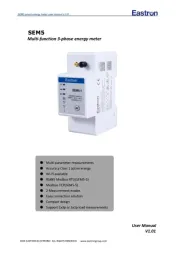
29 Juli 2025
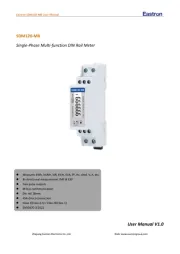
29 Juli 2025
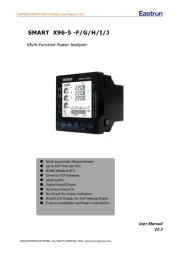
29 Juli 2025

29 Juli 2025
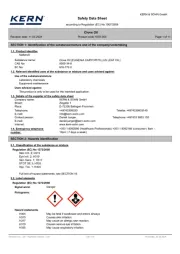
29 Juli 2025
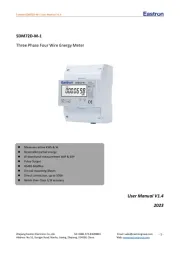
29 Juli 2025
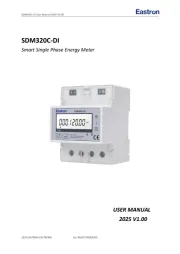
28 Juli 2025
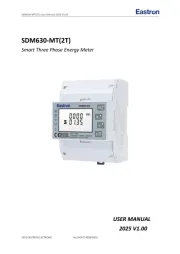
28 Juli 2025
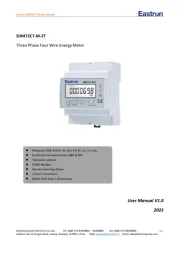
28 Juli 2025
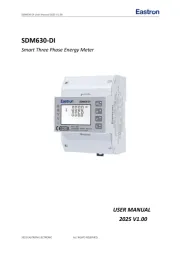
28 Juli 2025